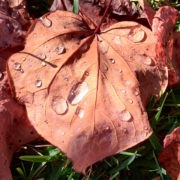5 Intention-setting Ideas to Move Through Grief
Holidays are not always the happy events portrayed in movies. Often times they activate a mixed bag of emotions and can leave us feeling sad, angry, depressed, confused, lonely, fearful, helpless, and hopeful. Yes, hopeful.
Hope is a human tendency of our authentic self and a universal invitation. It is the same emotion that allows us to think this holiday season will be different, that everyone will embrace the holiday spirit and bring forward their best selves.
Yet holidays are often a reminder of the things we have lost, whether loved ones, the possibilities of a life not lived or world peace. With the current world events creating a ripple effect that spreads shock, fear and grief, it’s important to recognize that holidays can be a challenging time for most of us for different reasons.
Therefore, below are some ideas for moving through grief that might arise during the holiday season:
- Acknowledge the loss. Sometimes we recognize the feelings, yet try to ignore them, especially if it is not clear why we are feeling them. Consider taking some time out to identify any losses you may have experienced. This can include the loss of a job, a relationship, a pet, a cherished dream, your health, safety, or selling your home. It could also be something that culturally has been celebrated in the past, such as graduating from high school or college, changing jobs, moving away from home to a dream location, and retirement.
- Acknowledge the pain. If you sense the emotions coming up and you are able to identify the loss or losses, acknowledge and allow the pain to be present. Ignoring it will only create more challenges down the road. Experiencing pain is the normal, natural human response to the loss of something meaningful to us. And the only way to heal the pain is through it. There is not a way around it. So consider creating a space, place and/or time to sit with the pain and honor the loss.
- Accept all emotions. There is no right or wrong way to grieve and it is important to know that the experience can bring up different, and sometimes surprising emotions, such as relief. Consider releasing any expectation (aka myths) around grieving and don’t listen to someone trying to tell you how you feel or should feel at any point through the journey. Each path through loss is unique and cannot be compared to another’s.
- Slow down. The stress that comes with a loss will deplete your energy and it is important to recognize this experience. Accepting that the desire “to do” will not be burning so brightly as you travel through your grief creates space for simply being. Consider giving yourself permission to put off what does not need to be done at this time. Or perhaps asking someone else to take something off your “to do” list.
- Ramp up self care. It will be important for you to prioritize your physical care, including sleeping, eating, and exercising. Maintaining your routines as much as possible brings emotional and mental comfort and temporary relief, creating space for healing. Consider spending additional time in those spaces that bring you happiness and joy. Doing so does not invalidate or ignore your grief and, instead, increases your resiliency by allowing all emotions to co-exist.










